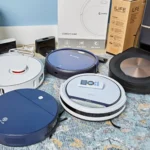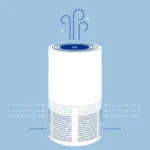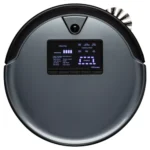Introduction: The Importance of Eco-Friendly Cleaning
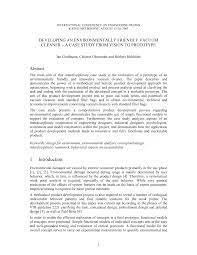
In today’s world, more and more people are becoming environmentally conscious and taking steps to reduce their carbon footprint in every aspect of their lives. One area where eco-friendliness is often overlooked is in cleaning. Traditional cleaning products and appliances can be harmful to both the environment and your health, which is why the importance of eco-friendly cleaning cannot be overstated.
One appliance that has been gaining popularity in recent years for its eco-friendliness is the smart vacuum cleaner. Smart vacuums not only make cleaning easier and more convenient, but they also help to protect the environment in a number of ways.
By using less energy and optimizing power usage, smart vacuums are much more energy-efficient than traditional vacuums. In fact, some smart vacuums are specifically designed to adhere to Energy Star rating standards, which means they use up to 50% less energy than other vacuums on the market. This not only helps to save you money on your energy bill but also helps to reduce your carbon footprint.
Additionally, smart vacuums employ waste management systems that are designed to reduce waste and pollution. They often have larger dustbins that require less frequent emptying, which means less plastic waste in landfills. They also use improved filtration systems that not only trap dust and dirt but also improve indoor air quality, making them beneficial for people with allergies or respiratory issues.
When it comes to choosing the right eco-friendly vacuum, there are several factors to consider. Energy efficiency ratings, waste management systems, and additional eco-friendly features such as scheduling and automation should all be taken into account. Proper maintenance and cleaning can also help to reduce energy consumption and prolong the life of your smart vacuum.
As technology continues to advance, it is likely that smart vacuum cleaners will become even more energy-efficient and environmentally friendly. With features such as artificial intelligence, machine learning, and improved battery technology, smart vacuums will continue to be an important tool in reducing our carbon footprint and living a greener life.
It is important to prioritize eco-friendliness in every aspect of our lives, including cleaning. Smart vacuum cleaners offer a plethora of eco-friendly benefits and should be considered when shopping for a new vacuum. By reducing energy consumption, waste, and pollution, smart vacuums can help us all live a greener, more environmentally conscious life. If you want to reduce energy consumption even further with your smart vacuum, check out these tips on how to reduce energy consumption with smart vacuums. For a list of additional eco-friendly features to look for in a smart vacuum, check out this article.
What are Smart Vacuum Cleaners?
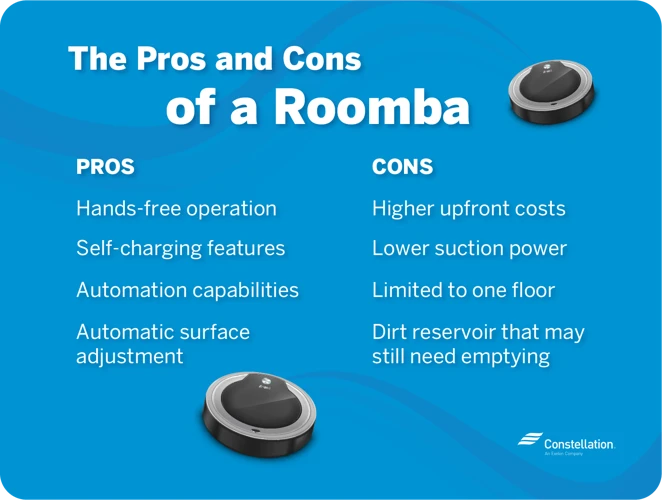
Smart vacuum cleaners are the latest innovation in the cleaning industry. These devices are designed to use advanced technology, which makes them efficient in cleaning floors and carpets. Unlike traditional vacuum cleaners, smart vacuums can clean autonomously without human intervention. They are equipped with sensors, cameras, and mapping software that help them navigate and clean a room without bumping into walls or furniture.
One of the most significant advantages of smart vacuum cleaners is their energy efficiency. They use less energy compared to traditional vacuum cleaners, which is beneficial for the environment and your wallet. According to energy consumption statistics, some models use less than 50 watts of power, which is significantly lower than traditional vacuum cleaners that consume 1,400 watts or more. This means that smart vacuums can operate for extended periods without increasing your energy bills.
Smart vacuums also use energy-efficient motors that are designed to consume less power. These motors reduce noise pollution and save energy, making them an eco-friendly alternative to traditional vacuum cleaners. They have energy-saving benefits and require less maintenance than traditional vacuums, which translates to lower operating costs.
Another essential aspect of smart vacuums is their ability to reduce your carbon footprint. By using less energy and generating less noise pollution, they contribute to a cleaner and healthier environment. They also come with waste management systems that ensure that dust and debris are disposed of properly. This means that you don’t have to worry about leaving a trail of waste behind as you clean.
Smart vacuums also have features that improve indoor air quality. They come with high-tech filtration systems that trap allergens and other contaminants, making your indoor environment healthier and safer to breathe. Unlike traditional vacuums that can release dust and allergens back into the air, smart vacuums ensure that the air in your home is clean and free from harmful particles.
Compared to traditional vacuums, smart vacuums are a better option for those who want an eco-friendly cleaning solution. They are more efficient, use less energy, and come equipped with advanced features that contribute to a cleaner environment. If you want to reduce your carbon footprint and live a greener life, consider investing in an energy-saving smart vacuum today.
Energy Efficiency of Smart Vacuums: How They Help the Environment
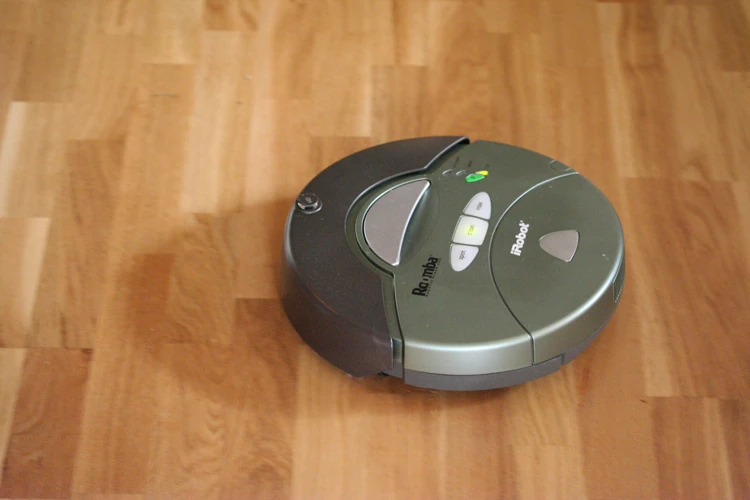
When it comes to keeping our homes clean, we often don’t stop to consider the impact our cleaning habits may have on the environment. However, with the rise of eco-consciousness, many of us are now seeking sustainable alternatives to our traditional cleaning methods. Enter smart vacuum cleaners – a high-tech solution to keeping our homes clean with a reduced impact on the environment. In this section, we will explore the energy efficiency of smart vacuums and how they can help reduce our carbon footprint. We will also take a look at the various benefits of energy-saving smart vacuums for both the environment and your wallet. Want to learn how to reduce your carbon footprint while vacuuming your floors? Check out our article on energy-efficient vacuuming tips.
Optimizing Power Usage
One of the key ways that smart vacuums help the environment is by optimizing power usage, which ultimately helps to reduce energy consumption. Unlike traditional vacuums that often run at high power levels regardless of the surface being cleaned, smart vacuums are designed to adjust their power usage based on the surface they are cleaning. This can significantly reduce the amount of energy required for cleaning while still maintaining high performance.
Let’s take a look at a comparison between a traditional vacuum and a smart vacuum in terms of power usage:
| Traditional Vacuum | Smart Vacuum | |
|---|---|---|
| Power Usage | Constant high power usage, even on low-pile carpet or hard floor surfaces | Variable power usage, adjusting to different surfaces and optimizing energy efficiency |
| Energy Consumption | Higher energy consumption | Lower energy consumption |
| Impact on Environment | Contributes to carbon emissions and increased energy use | Reduces carbon footprint and energy consumption |
As we can see from the comparison above, smart vacuums offer a significant advantage in terms of energy efficiency and environmental impact. By adjusting power usage to suit the surface being cleaned, these vacuums can operate at a lower wattage and use less electricity, which ultimately helps to reduce your home’s carbon footprint.
For shoppers looking for eco-friendly vacuum cleaners, it’s important to look for models that have earned the ENERGY STAR certification. This certification indicates that the vacuum cleaner has been independently tested and proven to meet strict energy efficiency guidelines set by the U.S. Environmental Protection Agency (EPA). Smart vacuums that have earned this certification can be a great investment for eco-conscious homeowners looking to reduce their energy consumption and protect the environment.
For more information about the benefits of energy-saving smart vacuums, read our article on the energy-saving benefits of smart vacuums.
Reducing Carbon Footprint
Smart vacuum cleaners play an important role in reducing our carbon footprint. These vacuums are designed to minimize energy waste, which leads to a decrease in the amount of energy required to power them. Here are some ways in which smart vacuums can help reduce carbon footprint:
- Energy-efficient motors: Unlike traditional vacuums, smart vacuums use high-performance, energy-efficient motors that reduce energy consumption by up to 70%. This means that they use less electricity and emit fewer carbon emissions to power the vacuum cleaner.
- Innovative programming: Smart vacuums are manufactured with advanced programming that optimizes energy use, so the vacuum cleaner only operates when it’s needed, based on the scheduling and the presence of dirt or dust. This feature reduces energy consumption and ensures that energy is not wasted when the vacuum cleaner is running unnecessarily.
- Better suction power: With improved technology, smart vacuums offer better suction power that allows them to pick up dirt and debris more effectively in a shorter amount of time. As a result, they need less energy to function and do the job correctly.
- Long-lasting batteries: Smart vacuums come with long-lasting batteries that allow them to run for prolonged duration without requiring frequent recharging. This means that the energy consumed while recharging is minimized, and fewer carbon emissions are produced as a result.
All these features come down to one critical aspect – an eco-friendly vacuum cleaner. Smart vacuums are designed to be as energy-efficient as possible, making them environmentally friendly while also saving you money in the long run. In addition to reducing carbon emissions and energy consumption, they offer a convenient and effective solution to conventional vacuum cleaners.
If you are looking for a more energy-efficient solution to traditional vacuums, consider buying a smart vacuum cleaner that meets the criteria laid out by Energy Star. ENERGY STAR is a program created by the US Environmental Protection Agency (EPA) that sets standards for energy-efficient products. Look for smart vacuums that feature the ENERGY STAR label, which indicates that they consume less electricity and produce less harmful emissions than other models.
By choosing a smart vacuum with the ENERGY STAR label, you can be confident that you’re making a greener and eco-friendly choice that will help reduce your carbon footprint.
Waste Management in Smart Vacuums: Benefits for You and the Environment
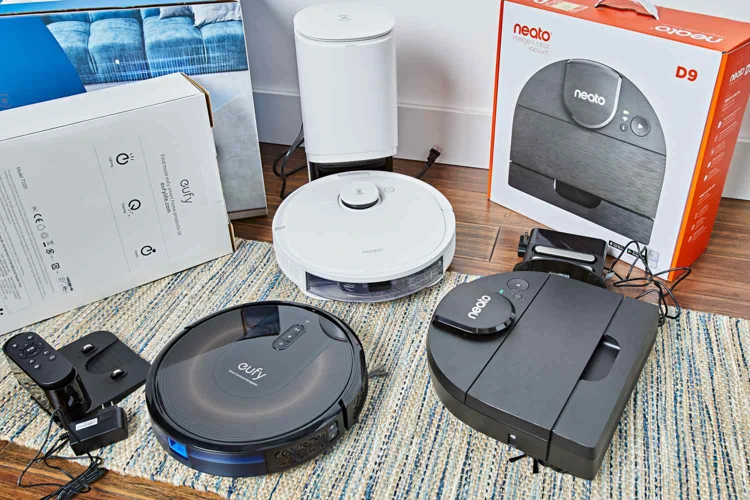
When it comes to cleaning, waste management is a crucial aspect that is often overlooked. However, with smart vacuum cleaners, waste management is taken to a whole new level. These high-tech cleaning machines not only provide a more efficient cleaning process but also offer several benefits for both you and the environment. From reducing waste to improving indoor air quality, the waste management features of smart vacuum cleaners are worth exploring. Let’s dive into some of the benefits that a smart vacuum cleaner’s waste management system can offer. But before that, it’s worth checking if your smart vacuum cleaner has an energy star rating by clicking on this link.
Less Waste, Less Pollution
Smart vacuum cleaners have revolutionized cleaning by using advanced technology to reduce waste and pollution. Unlike traditional vacuums, smart vacuums are equipped with waste management features that make them eco-friendly. But, how exactly do they contribute to reducing waste and pollution?
Efficient Dust Collection
Most smart vacuum cleaners have a high-efficiency dust collection system, which reduces the amount of waste produced during cleaning. They are designed to collect more debris and dust with a single sweep, which reduces the need to vacuum several times, saving time and reducing the amount of energy consumed from repeated cleaning.
Some smart vacuums also have self-emptying dustbins that eliminate the need for frequent emptying, reducing the amount of waste generated. This feature has a positive impact on the environment as it reduces the release of dust and other debris back into the air, which can cause respiratory problems.
Reusable Filter Technology
Traditional vacuum cleaners use bags that need to be replaced frequently, increasing waste production. Smart vacuums, on the other hand, have reusable filters that can be washed and reused, reducing the amount of waste generated.
Reusable filters are not only eco-friendly but also cost-effective in the long run. By reducing the need to purchase and dispose of vacuum cleaner bags, smart vacuums help users save money while also significantly reducing the amount of waste produced.
Smart Navigation
Smart vacuum cleaners are equipped with intelligent navigation technology, which enables them to navigate efficiently through the home, avoiding obstacles, and cleaning areas effectively. This feature saves time and energy consumption by enabling users to clean the house with a single sweep.
The efficient cleaning reduces the amount of dust and dirt left in the environment, improving indoor air quality. This is important for individuals with respiratory problems and allergies, as it reduces their exposure to pollutants in the air.
The following table summarizes some of the ways that smart vacuum cleaners can help reduce waste and pollution:
| Features | Benefits |
|---|---|
| Efficient Dust Collection | Reduces the amount of waste produced by cleaning. |
| Reusable Filter Technology | Reduces the amount of waste generated from frequently replacing vacuum cleaner bags. |
| Smart Navigation | Makes cleaning more efficient, reducing the amount of dust and dirt left behind in the environment. |
Smart vacuum cleaners are designed with advanced technology to reduce waste and pollution. They have efficient dust collection, reusable filter technology, and smart navigation systems that make cleaning eco-friendly. These features not only protect the environment but also help users save money and live a healthier life.
Improved Indoor Air Quality
Smart vacuum cleaners not only help reduce waste and energy consumption, but they also improve indoor air quality, which is crucial for a healthy living environment. Through their advanced filtration systems, these vacuum cleaners are capable of trapping even the smallest particles of dust, dander, and other allergens, preventing them from being re-released into the air.
One of the main benefits of smart vacuums is their ability to handle various types of flooring and surfaces, including hardwood, carpet, and tile. This versatility allows them to remove a wide range of allergens and pollutants, such as pet hair, pollen, and dust, from your home’s floors and air.
But how exactly do these vacuums improve indoor air quality? The answer is in their advanced filtration systems. Traditional vacuum cleaners often release dust and other particles back into the air as they clean, which can cause respiratory issues or allergies. However, smart vacuums have HEPA (High-Efficiency Particulate Air) filters that capture up to 99.97% of particles as small as 0.3 microns.
Here’s a breakdown of how different types of vacuum filters work:
| Filter Type | Description | Effectiveness |
|---|---|---|
| Conventional Filters | Uses a material that allows airflow while trapping dust and debris. | Traps particles larger than 0.3 microns, but may release smaller particles back into the air. |
| HEPA Filters | Uses fibrous material to capture very small particles of dust and allergens. | Captures 99.97% of particles as small as 0.3 microns, making it highly effective at reducing indoor air pollution. |
| ULPA Filters | Uses even finer mesh to capture even smaller particles than HEPA filters. | Captures particles as small as 0.12 microns, making it highly effective at trapping viruses and bacteria. |
HEPA filters are the most common type of vacuum filter and are highly effective at reducing allergens and indoor air pollution. By trapping dust, pet hair, and other small particles, these filters prevent them from being released back into the air you breathe. This means that smart vacuums not only clean floors, but they also keep the air in your home cleaner and healthier.
Smart vacuum cleaners with HEPA filters are highly effective at improving indoor air quality by trapping small particles and preventing them from being released back into the air. By reducing the amount of dust and allergens in your home, these vacuums can provide a healthier living environment for you and your family.
Smart Vacuums vs Traditional Vacuums: Which is Better for the Environment?
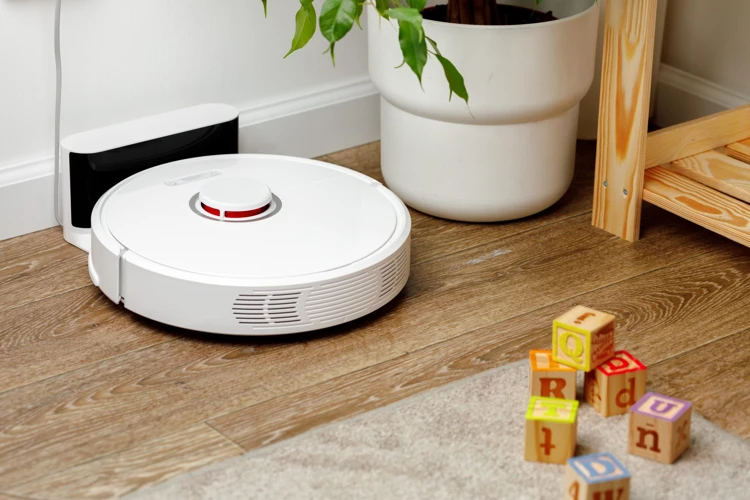
When it comes to choosing between smart vacuums and traditional vacuums, many people are left wondering which is better for the environment. Traditional vacuums are notorious for consuming high amounts of electricity, which leads to higher greenhouse gas emissions. On the other hand, smart vacuums make use of cutting-edge technology to improve energy efficiency and waste management.
Energy Efficiency: Traditional vacuums are known for being energy-intensive. They consume a significant amount of power to run the motor and generate suction. In contrast, smart vacuums use computer-controlled motors and optimized suction technology to reduce their energy consumption significantly. They adjust the suction power depending on the surface being cleaned, which means they don’t waste energy on surfaces that don’t require high suction power. This energy efficiency results in a lower carbon footprint and decreased power bills.
Waste Management: Traditional vacuums rely on disposable bags, which can create a lot of waste over time. These bags often end up in landfills and contribute to pollution. In contrast, smart vacuums use waste management systems that reduce the amount of waste produced. They often have washable filters that are reusable, which means less waste ends up in landfills. This recycling system results in improved indoor air quality since there is less dust and debris in the air.
When comparing smart vacuums to traditional vacuums, it’s clear that smart vacuums are more eco-friendly. However, it’s important to note that not all smart vacuums are the same. Some come with advanced features like high-tech filtration systems and automation, which further optimize their energy efficiency and waste management capabilities. Additionally, choosing a vacuum with a high energy efficiency rating and better waste management features can make all the difference in your ecological impact.
Smart vacuums are a better choice for those who want to live a more eco-friendly lifestyle. Their advanced technology helps to reduce energy consumption and waste production, which benefits both the environment and your wallet. Plus, with the wide range of features that smart vacuums offer, you can choose a model that suits your needs while also contributing to a cleaner planet.
Additional Eco-Friendly Features of Smart Vacuums
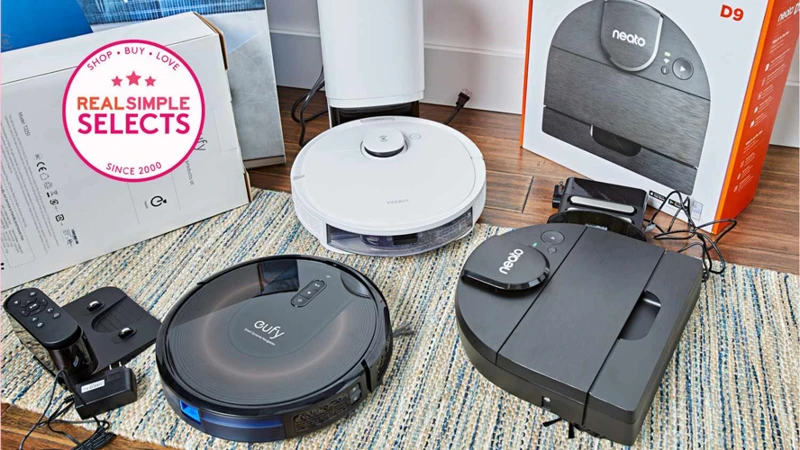
When it comes to eco-friendly cleaning, smart vacuum cleaners come with an array of advanced features that make them the perfect choice for environmentally conscious households. With their ability to automate the cleaning process and optimize energy usage, these innovative devices can have a significant impact on both the cleanliness of your home and the health of the planet. But what really sets these vacuums apart are the additional eco-friendly features that make them stand out from traditional vacuum cleaners. From scheduling and automation to high-tech filtration systems, let’s explore how smart vacuums are taking green cleaning to the next level.
Scheduling and Automation
One of the key features that sets smart vacuum cleaners apart from traditional ones is their ability to be scheduled and automated. This means that you can set your vacuum to automatically start cleaning at a specific time, even if you’re not at home. This is particularly useful for those with busy schedules who don’t have time to manually clean their homes on a regular basis.
Here are some of the benefits of scheduling and automation:
- Efficiency: By scheduling your vacuum to clean at specific times, you can ensure that your home is always clean without having to lift a finger. This means that you can focus on other tasks while your vacuum does the work for you.
- Conservation of energy: Smart vacuums use sensors to navigate your home and avoid cleaning areas that have already been cleaned. This means that they use less energy and run for shorter periods of time than traditional vacuums.
- Less wear and tear: By scheduling your vacuum to clean at regular intervals, you can prevent excessive wear and tear on your flooring.
- Reduced electricity costs: By scheduling your vacuum to clean during off-peak hours, you can reduce your electricity costs.
Scheduling and automation is a convenient and eco-friendly feature that can save you time and energy, while also reducing your carbon footprint. When shopping for a smart vacuum, be sure to look for models with scheduling and automation functions to maximize the benefits of this feature.
High-Tech Filtration Systems
Smart vacuum cleaners are designed not only to efficiently clean your floors but also to maintain healthy indoor air quality. One of the key features that enable these smart devices to achieve this is their high-tech filtration systems.
Here are some of the types of filters that are commonly used in smart vacuum cleaners:
- HEPA filters: These filters are designed to capture tiny particles such as pollen, pet dander, and dust mites. They can remove up to 99.97% of particles as small as 0.3 microns, making them a popular choice for people who suffer from allergies or asthma.
- Carbon filters: These filters are effective at removing odors and gases such as smoke and cooking smells. They work by absorbing the particles onto activated carbon, which is a highly porous material that increases the surface area available for absorption.
- Pre-filters: These filters are designed to capture larger particles such as hair and dirt before they reach the main filter. This helps to prolong the life of the main filter and ensures that it can capture more of the smaller particles that can be harmful to your health.
- Washable filters: Some smart vacuum cleaners come with washable filters that can be reused multiple times. This helps to reduce waste and saves you money on replacement filters.
The combination of these filters allows smart vacuum cleaners to capture a wide range of particles and pollutants, ensuring that your indoor air quality remains healthy. Many smart vacuum cleaners also have sensors that can detect when the filters need to be changed or cleaned, making it easy for you to maintain the efficiency of your device.
Having a high-tech filtration system in your smart vacuum cleaner not only provides health benefits for you and your family but also has a positive impact on the environment. By capturing more particles and pollutants, these filters can help reduce the need for harsh chemicals and cleaning products that can harm the environment.
When choosing a smart vacuum cleaner, it’s important to consider the type of filtration system it uses. Look for devices that use HEPA filters and other advanced filtration technologies to ensure that your indoor air quality remains healthy and that you are doing your part to protect the environment.
Factors to Consider When Choosing an Eco-Friendly Vacuum Cleaner
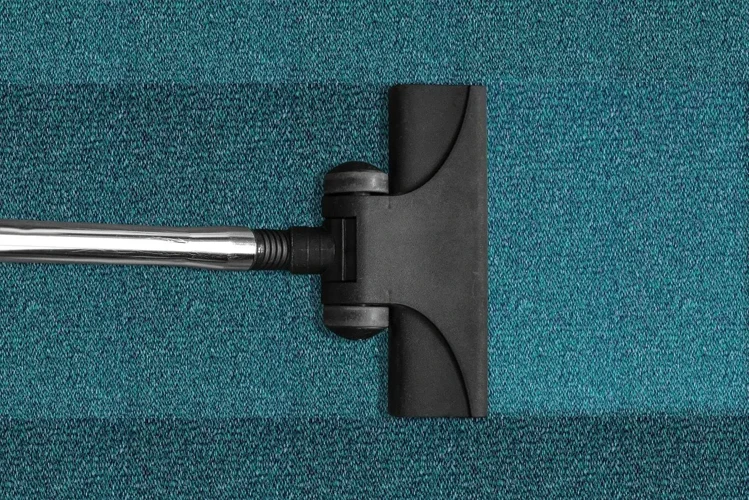
When looking for a new vacuum cleaner, we often focus on features like suction power and versatility. However, for the environmentally conscious consumer, it’s essential to consider the impact your appliance has on the planet. Choosing an eco-friendly vacuum cleaner is an excellent way to reduce your carbon footprint and contribute to a greener future. However, with so many models available, it can be overwhelming to know where to start. In this section, we’ll explore the factors to consider when selecting an eco-friendly vacuum cleaner that offers both performance and sustainability.
Energy Efficiency Ratings
When choosing an eco-friendly vacuum cleaner, one of the most important factors to consider is its energy efficiency rating. The rating system used for vacuum cleaners is based on the amount of power they consume and how efficiently they use that power to clean. A higher rating means less energy is being used, which results in lower energy costs and less environmental impact.
Here are some key things to keep in mind when examining energy efficiency ratings:
- Look for ENERGY STAR certification: This is a reliable indicator that the vacuum has been rigorously tested and meets high standards for energy efficiency.
- Consider the wattage: A lower wattage vacuum should consume less energy, but you should also consider how effective it is at cleaning. A high-efficiency vacuum with a lower wattage may be more effective than a high-wattage, less efficient model.
- Check the annual energy consumption: Some vacuum cleaners will list an energy consumption per year on the label. This can help you estimate how much electricity the vacuum will consume over its lifetime and make an informed decision.
- Compare different models: Don’t just settle for the first efficient vacuum you find. Compare different models to determine which is the most efficient and effective choice for your specific cleaning needs.
By choosing a vacuum cleaner with a high energy efficiency rating, you can save on electricity costs and reduce your overall impact on the environment. So when shopping for a smart vacuum cleaner, make sure to consider the energy efficiency rating as one of the key factors in your decision-making process.
Waste Management Systems
Smart vacuum cleaners have made cleaning your home more eco-friendly not just by optimizing power usage, but also by improving waste management systems. The proper disposal of dust and debris can not only help keep your home cleaner but also reduce pollution and improve indoor air quality. So, what should you look for in waste management systems when selecting an eco-friendly vacuum cleaner?
Multi-stage Filtration Systems: One of the most significant features of smart vacuums’ waste management systems is their multi-stage filtration. These systems can filter out even the tiniest particles from the air and capture everything from dust and allergens to microbes and viruses. The HEPA filters used in some smart vacuums trap almost 100% of these harmful particles, including those as small as 0.1 microns.
Bag or Bagless: Smart vacuums come both with and without dust bags. Those with bags are easier to throw away and are ideal for people with allergies, asthma, or respiratory diseases since the bags trap all the dust and dirt. Bagless models, on the other hand, deposit the dirt into a dirt cup, which you can empty and wash when full, doing away with costs associated with purchasing replacement bags. When choosing between the two types, consider what will work for you and the environment.
Reusable Filters: Reusable filters are a great feature of some smart vacuums as they help to reduce waste. These filters are washable, and you don’t have to purchase a new one each time it gets dirty. Some smart vacuum cleaners come with different filter types that you can switch depending on the kind of waste you are cleaning.
Smart Disposal: Some smart vacuum cleaners have special features that allow for smart waste disposable. These systems include disposing of waste in a way that is both eco-friendly and less likely to create more waste. The robots empty dustbins into designated refuse bins, helping to reduce waste.
A smart vacuum cleaner’s waste management system is just as important as its power-saving features when you are considering buying an eco-friendly vacuum cleaner. Remember, when choosing the right vacuum for you and the environment, factors such as the type of filtration system, whether it has a dustbag or not, its reusable filters, and smart disposal options are crucial.
Additional Eco-Friendly Features
When considering eco-friendly vacuum cleaners, it’s important to look beyond just energy efficiency and waste management. Many smart vacuums come with additional features that can further reduce your environmental impact. Here are some of the most notable eco-friendly features to look out for:
- Recyclable Materials: Some smart vacuums are made using sustainable or recycled materials, reducing their impact on the environment.
- Low Noise: Quieter vacuum cleaners can reduce noise pollution in your home, and make cleaning a more pleasant experience.
- Longer Lifespan: Smart vacuums are generally designed to last longer than traditional models, reducing the need for replacement and ultimately reducing waste in landfills.
- Modular Design: Some smart vacuums have a modular design which allows for easy repairs and replacement of individual parts, again reducing waste.
- Multi-purpose Cleaning: Some smart vacuums come with additional attachments for wet-mopping or spot cleaning, reducing the need for separate cleaning tools and products.
- BPA-Free Dustbins: Traditional vacuum cleaners can release harmful chemicals when their dustbins are emptied. Smart vacuums often come with dustbins that are BPA-free, reducing health risks and environmental harm.
- Smartphone Connectivity: Being able to control your vacuum from your phone means more efficient cleaning, reducing the amount of electricity and time needed to clean your home.
By choosing a vacuum cleaner that incorporates these additional eco-friendly features, you can further reduce your environmental impact and contribute to a greener and cleaner planet.
The Future of Eco-Friendly Cleaning: Trends in Smart Vacuum Technology
As technology continues to advance, the future of eco-friendly cleaning has never looked brighter. With each passing year, newer and more innovative smart vacuums are hitting the market, aimed at making our homes cleaner while reducing our carbon footprint. From improved energy efficiency ratings to cutting-edge features like AI and machine learning, the future of smart vacuum technology is full of promise. In this section, we’ll take a deep dive into the latest trends in eco-friendly smart vacuums and what they mean for the future of home cleaning.
Artificial Intelligence and Machine Learning
As technology continues to advance, so do the features of smart vacuum cleaners. One of the most notable advancements in the field is the integration of artificial intelligence (AI) and machine learning. This allows the vacuum to adapt to changes in its environment and perform tasks more effectively and efficiently.
In order to understand the impact of AI and machine learning, let’s take a closer look at how these technologies work in vacuum cleaners. AI allows the vacuum to make decisions based on real-time data and interact with its environment in a more intuitive way. For example, it can recognize obstacles and adjust its path accordingly.
Machine learning, on the other hand, helps the vacuum to improve its performance over time by analyzing data and learning from its experiences. This means that the more the vacuum is used, the smarter it becomes.
By integrating AI and machine learning, smart vacuums can reduce energy waste and maximize efficiency. They can also adapt to the specific needs of the user and optimize their cleaning patterns accordingly.
| Benefits of AI and Machine Learning in Smart Vacuums |
|---|
| Improved efficiency and effectiveness |
| Adaptability to changes in environment |
| Personalized cleaning patterns |
| Less energy waste |
As AI and machine learning continue to evolve, we can expect to see even more advanced features in smart vacuums. In the future, they may even be able to identify different types of flooring and adjust their cleaning methods accordingly.
It’s clear that AI and machine learning have the potential to revolutionize the way we clean our homes. As these technologies become more widespread, we can expect to see a significant impact on both our environment and our daily lives.
Improved Battery Technology
Smart vacuum cleaners are the future of eco-friendly cleaning. One of the most significant improvements in smart vacuum technology is the improved battery technology. With the advancements in battery technology, smart vacuums are now able to run for longer periods than ever before, which not only makes them more efficient but also more convenient for users.
The table below provides an overview of how the latest battery technology has improved smart vacuum cleaners:
| Battery Efficiency | Battery Capacity | Battery Life |
|---|---|---|
| Increased efficiency | Larger capacity | Longer life |
| Smart vacuums now use batteries that are more efficient, meaning they require less power to run. | The latest smart vacuums have larger batteries that can hold more charge, allowing them to run for longer periods. | Improved battery life means users can clean for longer periods without having to recharge their vacuums as frequently. |
| By using more efficient batteries, smart vacuums consume less power, which reduces their impact on the environment while also saving users money on their electricity bills. | A larger battery capacity also reduces the number of times users need to recharge their vacuum, leading to less energy consumption and a longer overall lifespan of the battery. | Longer battery life means fewer resources are needed to produce replacement batteries, which reduces waste and helps improve the overall sustainability of the product. |
Improved battery technology in smart vacuum cleaners is a significant development that not only benefits the environment but also makes life easier for users. With longer battery life, users can clean their homes for longer without interruption, and with larger battery capacities, they can clean larger areas before needing to recharge their vacuums. As battery technology continues to improve, we can expect even more significant developments in the future, making smart vacuum cleaners even more eco-friendly and user-friendly.
Conclusion: How Smart Vacuum Cleaners Can Help You Live a Greener Life
It’s clear that smart vacuum cleaners can have a significant impact on your overall quest to live a greener life. By choosing these eco-friendly cleaning options, you’re not only reducing your carbon footprint, but you’re also doing your part to promote sustainable and responsible waste management.
One of the key benefits of smart vacuums is their energy efficiency. With their optimized power usage and reduced carbon footprint, smart vacuums are a smart choice for those looking to reduce their energy usage and the negative impact on the environment. Plus, with their advanced waste management systems, you’ll be able to manage waste responsibly and limit pollution.
Compared to traditional vacuum cleaners, smart vacuums are the better choice for those who want to make their homes more eco-friendly. With advanced features like scheduling and automation, high-tech filtration systems, and improved waste management processes, they offer a more comprehensive and eco-friendly cleaning experience.
When considering the eco-friendliness of a vacuum cleaner, there are a number of factors to take into account. Look for energy efficiency ratings, as well as waste management systems and other eco-friendly features. By investing in an eco-friendly vacuum cleaner, you’ll be doing your part to promote sustainable living.
Looking towards the future, there are exciting advancements on the horizon that could further improve the eco-friendliness of smart vacuums. With the implementation of artificial intelligence and machine learning, as well as improved battery technology, smart vacuums have the potential to become even more energy-efficient and eco-friendly.
Smart vacuum cleaners are an excellent choice for those looking to live a greener life. With their advanced features and innovative technology, they offer a more eco-friendly and sustainable cleaning experience. By investing in a smart vacuum, you’re not only improving your own quality of life but contributing to a cleaner and more sustainable environment for generations to come.
Frequently Asked Questions
What is the energy consumption of a smart vacuum cleaner compared to a traditional vacuum cleaner?
Smart vacuum cleaners consume less energy than traditional vacuum cleaners due to their optimized power usage.
Do smart vacuums have better waste management systems than traditional vacuums?
Yes, smart vacuums have better waste management systems, which leads to less pollution and improved indoor air quality.
What is the lifespan of a smart vacuum cleaner compared to a traditional vacuum cleaner?
The lifespan of a smart vacuum cleaner is generally longer than that of traditional vacuum cleaners due to their high-tech components and materials.
How do smart vacuums contribute to reducing carbon footprint?
Smart vacuums optimize power usage and have more efficient waste management systems, thus reducing carbon footprint.
Can smart vacuums be controlled remotely?
Yes, most smart vacuums can be controlled remotely through their mobile app or by voice command through smart home devices like Amazon Alexa or Google Home.
Do smart vacuums require any special maintenance?
Smart vacuums are low maintenance, but it is important to regularly clean the filters and replace them when necessary.
What is the price range of smart vacuum cleaners?
The price range of smart vacuums varies, but they can range from $200 to $1000 depending on the features and brand.
What type of flooring can smart vacuums clean?
Smart vacuums can clean all types of flooring, including carpets, hardwood, tile, and laminate floors.
How often do the waste bins of smart vacuums need to be emptied?
The waste bins of smart vacuums need to be emptied on a regular basis, depending on the amount of debris picked up during cleaning. Some models have larger waste bins and can go longer between emptying.
Are smart vacuum cleaners environmentally friendly?
Yes, smart vacuum cleaners are environmentally friendly due to their energy efficiency, waste management systems, and other eco-friendly features that contribute to a greener lifestyle.




